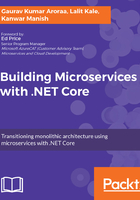
The concept of Seam
At the very core of microservices lies the capability to work on a specific functionality in isolation from the rest of the system. This translates into all the advantages discussed earlier, such as reduced module dependency, code reusability, easier code maintenance, and better deployment.
In my opinion, the same attributes that were attained with the implementation of microservices should be maintained during the process of implementation. Why should the whole process of moving monoliths to microservices be painful and not be as rewarding as having the microservices itself? Just remember that the transition can't be done overnight and would need meticulous planning. Many capable solution architects have differed from my approach while presenting their highly capable teams. The answer lies not just in the points already mentioned but the risk to the business itself at the same time.
This is very well attainable. However, we must identify our way to the path correctly in order to achieve it. Otherwise, there is a possibility that the whole process of transitioning a monolithic application to microservices could be a dreadful one.